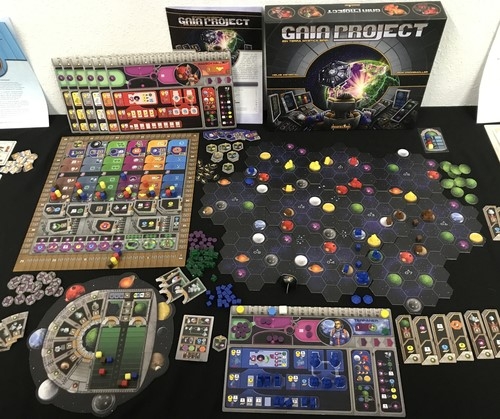
Trajectories of stars in the Milky Way galaxy over the next 400,000 years based on measurements by the European Gaia mission. We have to process this data into a catalogue that for each of the nearly two billion stars that we measure contains only five parameters for astrometry, and then additional parameters for brightness and spectra."Īccording to the German Aerospace Centre (known by its German acronym DLR), the mission's final catalogue will comprise over a petabyte of data, which, if printed on paper, would stack up to 60 miles (100 km) high. "That means that when we start our work, we have many trillion individual star observations.

"Each star gets measured on average 75 times every five years," Stefan Jordan, one of the researchers of the DPAC team based at the Centre for Astronomy of the University of Heidelberg in Germany, told E&T magazine (opens in new tab).

The gaia project software#
Before the wider scientific community gets its hands on the data and starts unravelling the galaxy’s mysteries, the Gaia Data Processing and Analysis Consortium (DPAC), consisting of over 400 researchers and software engineers scattered over six super-computing centers across Europe, spends years processing, calibrating and validating the data. But with the help of clever algorithms and a lot of scientific knowledge, astronomers can reconstruct the Milky Way as a whole from the mission's observations.Įvery day, Gaia sends 20 to 100 gigabytes of data to Earth, which equals 850 million individual star observations. The two billion stars that Gaia sees represent only about 1% of the galaxy's stellar population. This instrument measures how fast stars move toward or away from Gaia but also reveals how these stars absorb light, which reflects their chemical composition. From these measurements, scientists can derive temperatures, masses, ages and compositions of stars.Ī radial velocity spectrometer is also on board Gaia. In addition to the two telescopes, Gaia also carries blue and red photometers that measure the brightness and color of the observed stars. Rather than create spectacular images, these telescopes enable astronomers to determine a few key parameters that reveal the distances of stars from Gaia, as wellas their positions and motions on the plane of the sky. The telescopes project the light they capture onto a 1-billion-pixel camera, which distinguishes the faintest details of the surrounding universe. The 7.5-foot-wide (2.3 meters) Gaia satellite is attached to a 33-foot-wide (10 m) circular sunshield and is fitted with two telescopes that sit 106 degrees apart.

The gaia project free#
Shielded by Earth from the sun's glare but also free from the distorting effects of Earth's atmosphere, which plague ground-based telescopes' observations, the flying-saucer-like spacecraft scans the whole sky every two months. Nestled in the Lagrange Point 2, some 930,000 (1.5 million kilometers) miles away from Earth, Gaia orbits the sun in synch with our planet.


 0 kommentar(er)
0 kommentar(er)
